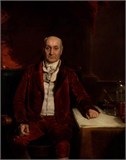The next names to appear in the documents were those of the Reverend Thomas Rudge, William Bishop, a Gloucester grocer, and Charles Evans, the latter’s trustee. Thomas Rudge agreed to sell to William Bishop a piece of ground approximately one rood in area, for the sum of £42 15s,
“being the north-west corner of an inclosure of pasture ground belonging to the said Thomas Rudge as Rector as aforesaid situate within the parish of St Michael in the city of Gloucester and adjoining the highway leading from Barton Street towards the Regnum Stile … and is bounded on the north by land late belonging to the Reverend Ebenzer Cornell but now to James Jelf, Esquire, on the south and east by the land of the said Thomas Rudge as Rector, on the west by the said highway, together with all appurtenances”
Later that year, another document was signed, entitled ‘Exchange’. It began with the following statement.
“Soon after Mr Bishop purchased the within mentioned piece of land, he erected a messuage, stable, etc., thereon and one of much greater value than the messuage comprized in the indenture of 1st January 1801 and soon after Mr Bishop exchanged the same with Messrs Rudge, Bailey and Stock for the messuage comprized in the deed of 1st January 1801.”
The Reverend Thomas Rudge, clerk, was “rector of the rectory of St Mary de Grace” [the church itself was demolished in 1652 and the materials used to repair St Michael’s church]. William Bishop was a grocer of Gloucester and Charles Evans, a gentleman, from Highgrove.
By June of the same year, there was an exchange of properties. The messuage, brewhouse, kitchen garden and hereditaments in the parish of St Mary de Grace held by the Reverends Thomas Rudge, Joseph Baylis and Thomas Stock were exchanged for the messuage, garden and hereditaments in the parish of St Michael vested in William Bishop and his trustee, Charles Evans.

